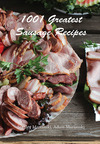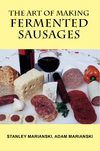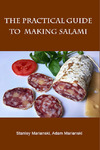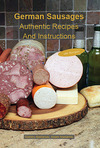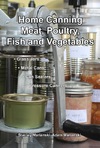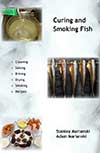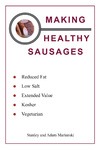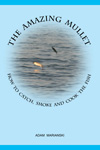Meats and Sausages
Lard - Homemade
| Materials | Metric | US |
|---|---|---|
| back fat, fresh (not frozen), without skin and traces of meat | 1 kg | 2.2 lb |
Instructions
- Dice back fat into 1/4 inch cubes or grind through a 3/8" plate.
- Put skillet on a heat source and add diced/ground back fat. Apply heat and start melting the fat, stirring often. Any indication of smoke signifies that the temperature is too high, turn the heat down.
- Remove cracklings by filtering the lard through a strainer.
- When the temperature of the lard drops to 72° F, 22° C, pour the lard into No. 2.5, 401 x 411 or No. 2, 307 x 409 cans. Place in a cool area so the lard will set. If needed, you can add more warm (liquid) lard to the container.
- Seal the cans.
- Clean the cans and store.
NOTE there is no thermal processing involved.
There were very few products that were not submitted to thermal process. The products were lard and smoked bacon, both packed in cans. Smoked sausages were often packed in lard to extend their shelf life. The practice was not limited to Eastern European countries, but was common in other areas, for example in Cuba. Such products were kept in root cellars or in cool pantries. Fresh fat is a poor medium for bacteria to grow as it contains very few nutrients and little moisture (15%) as compared to meat which contains proteins, vitamins, minerals and 75% moisture. During production of lard most of the moisture is evaporated during heating and this is the reason lard keeps so well.



